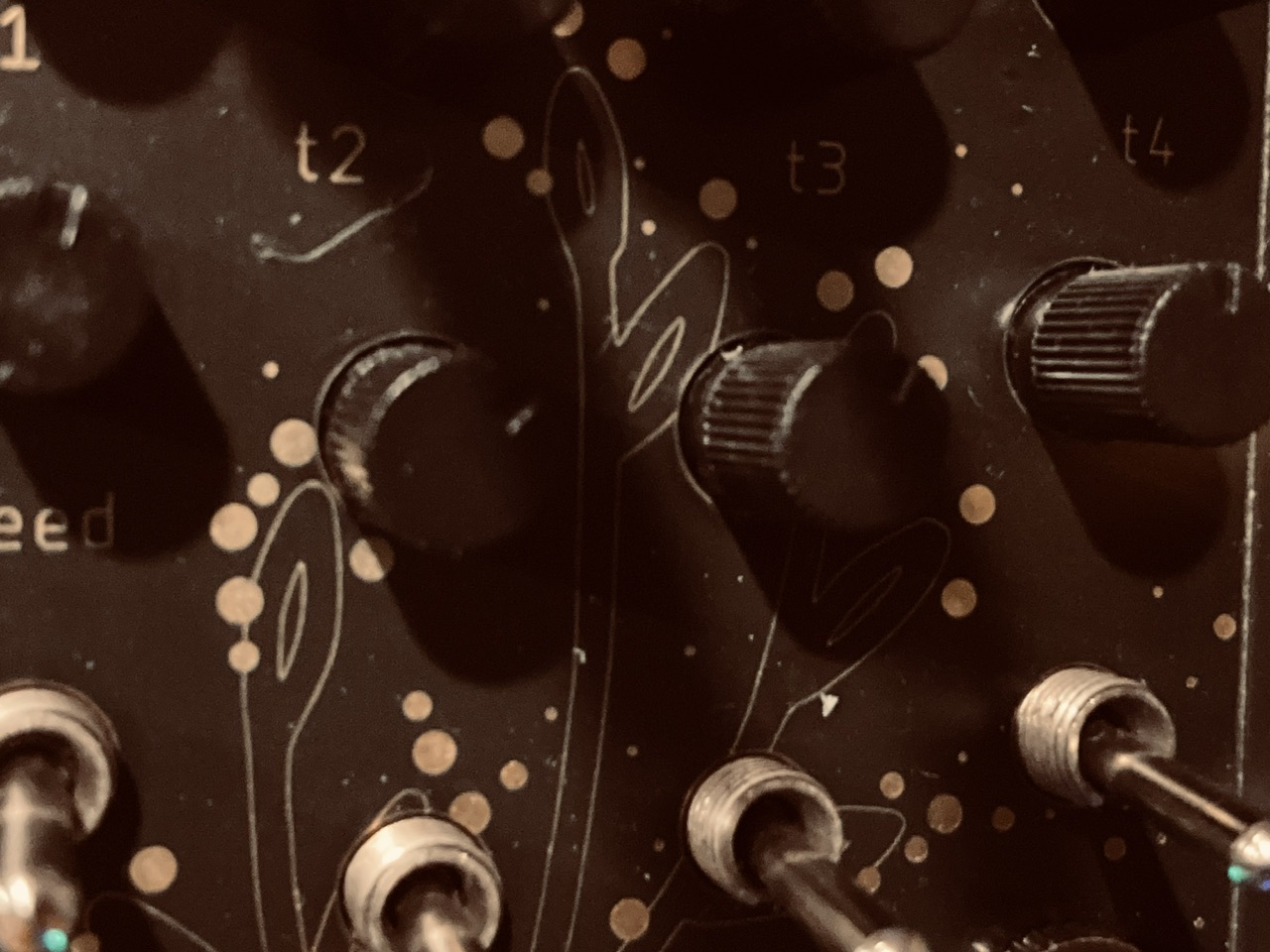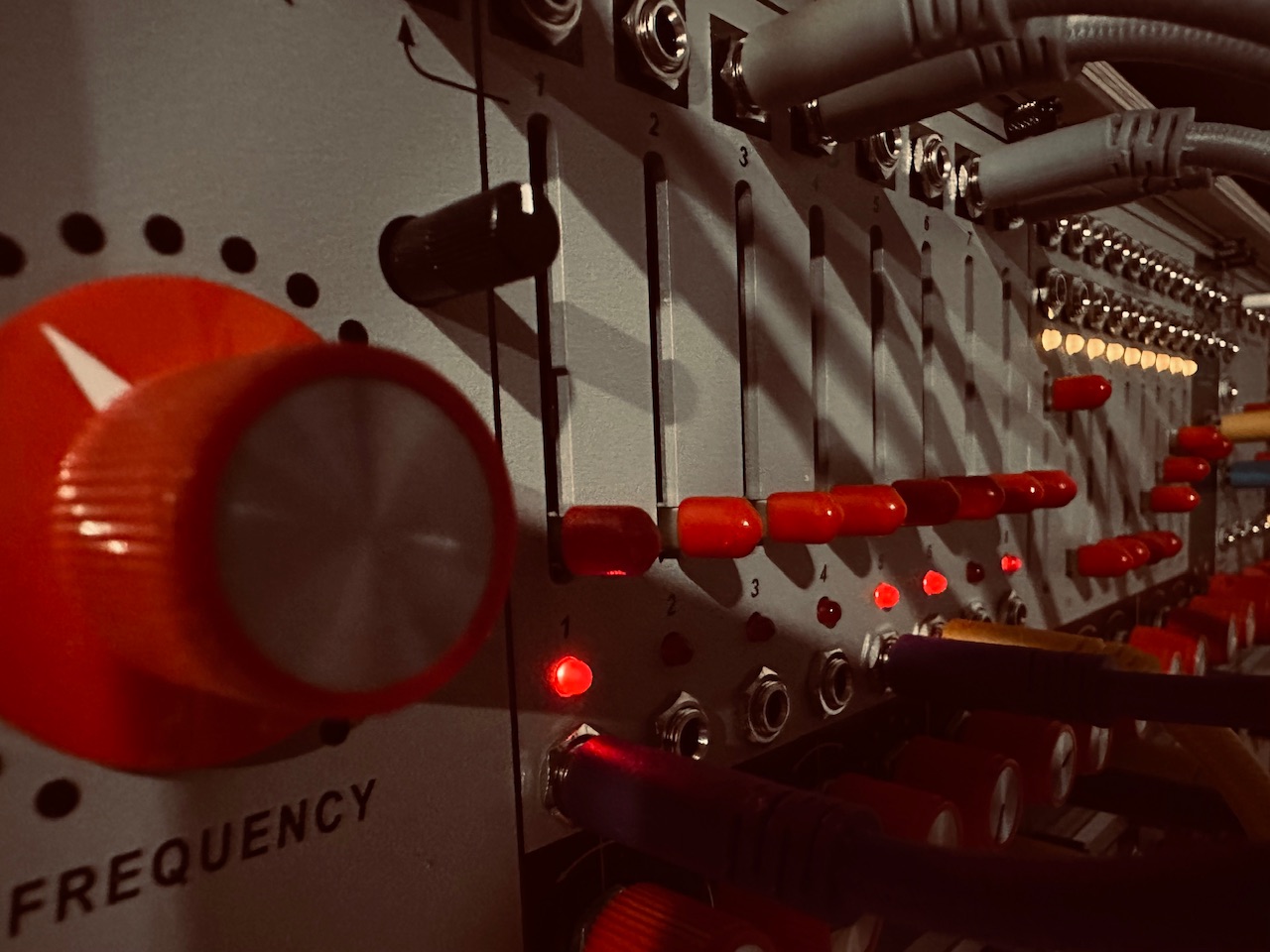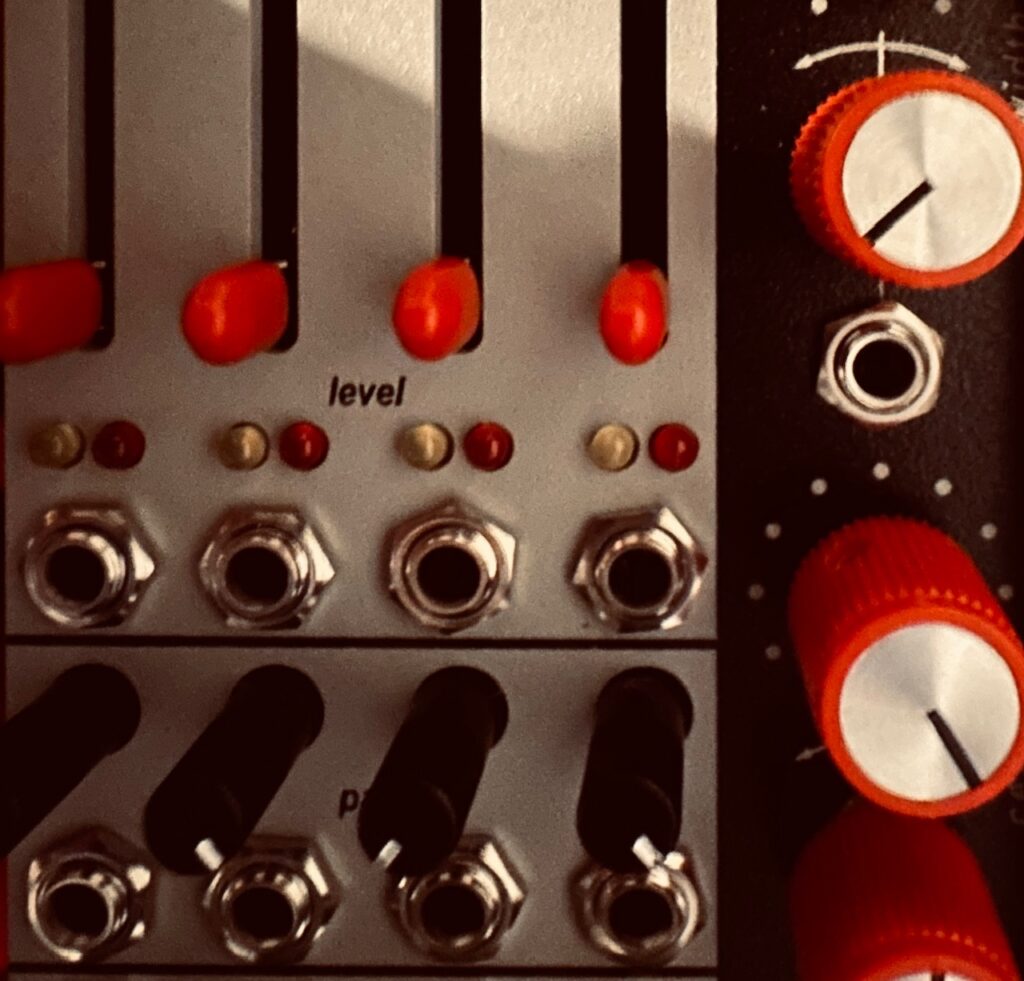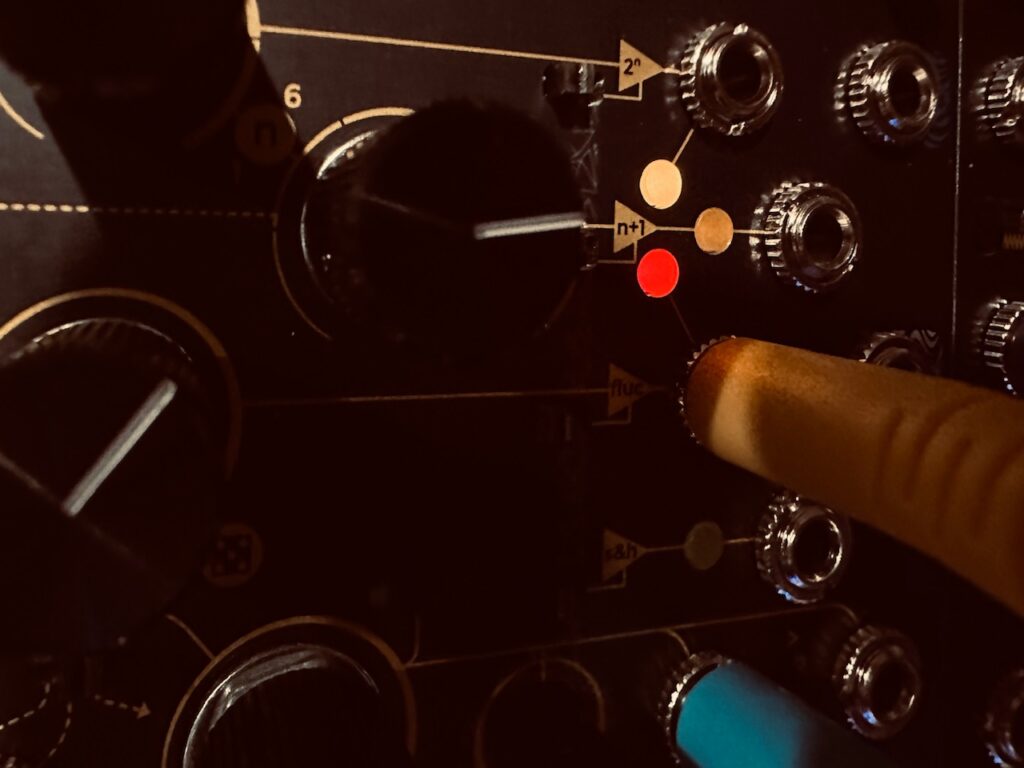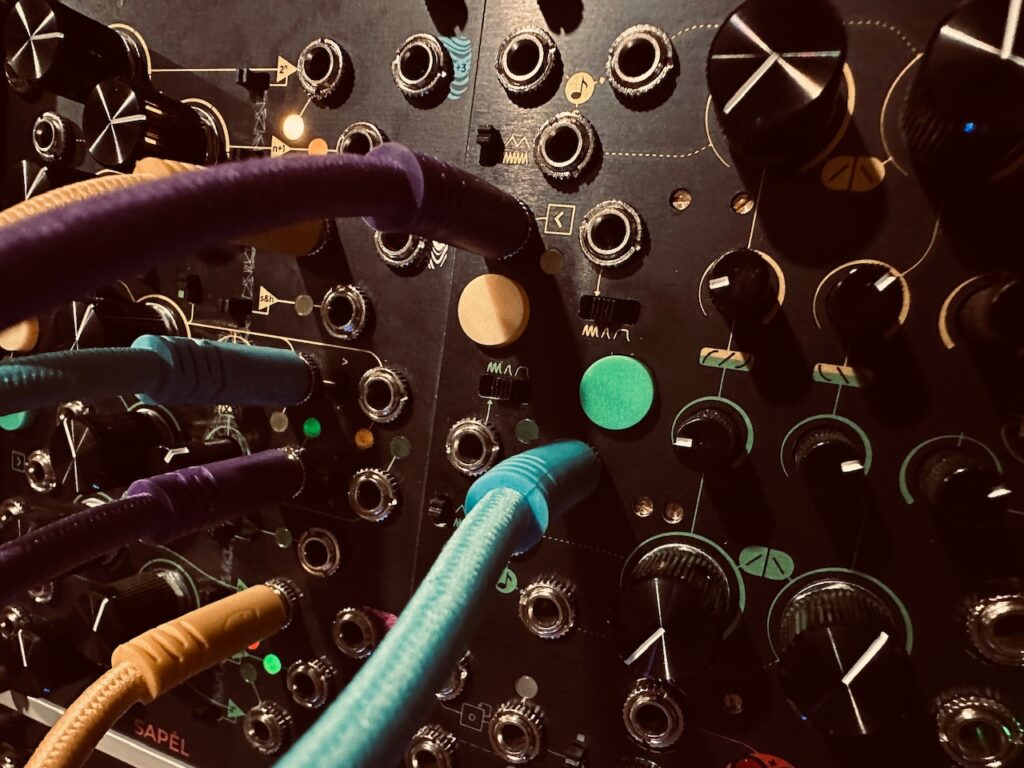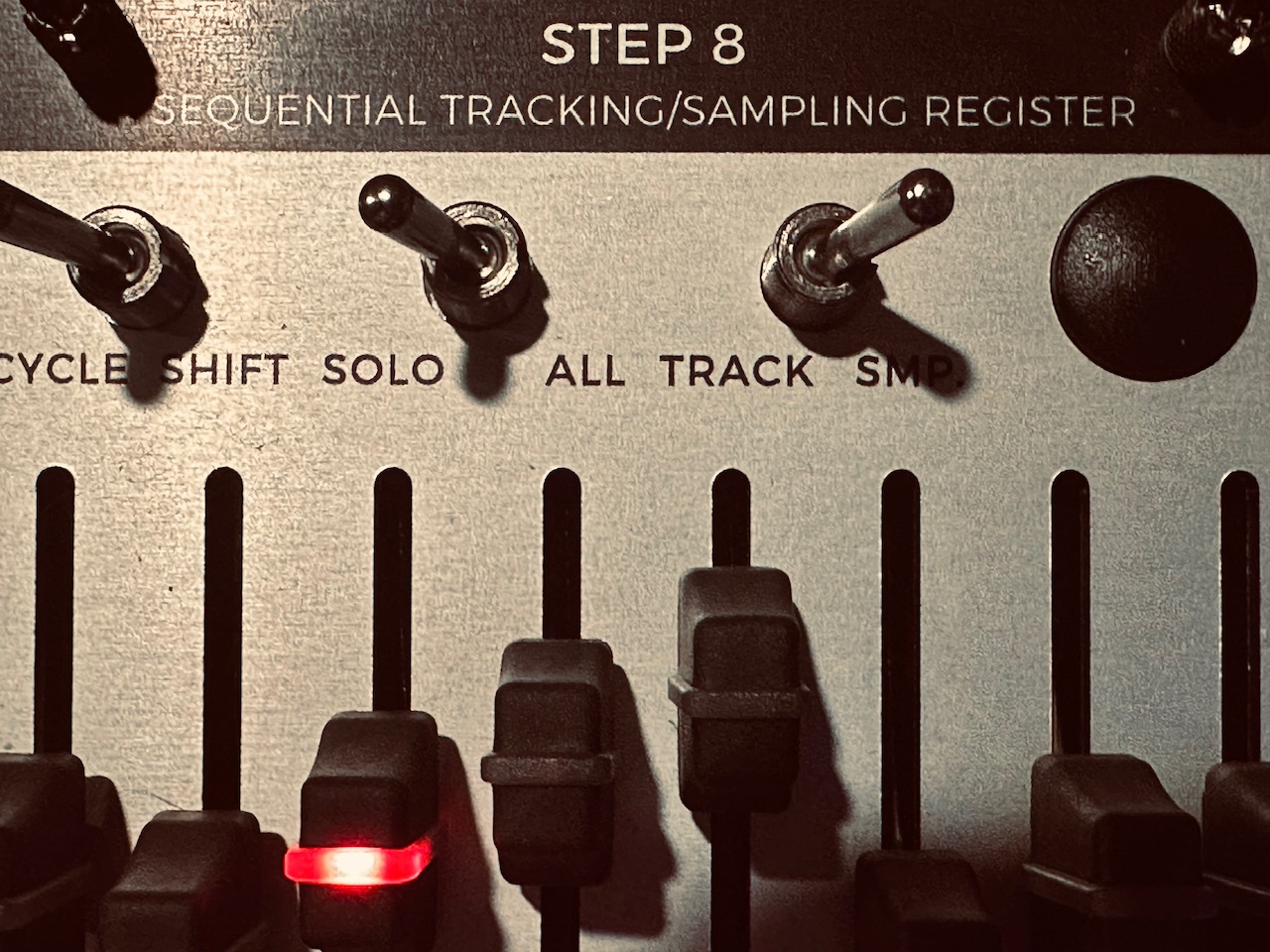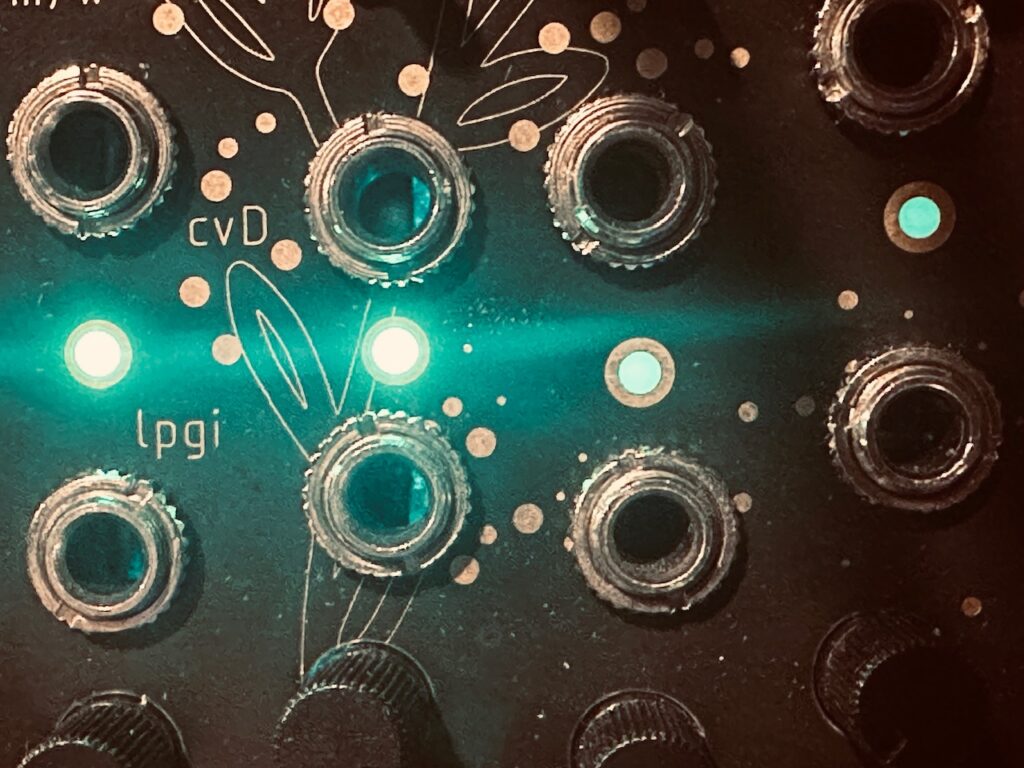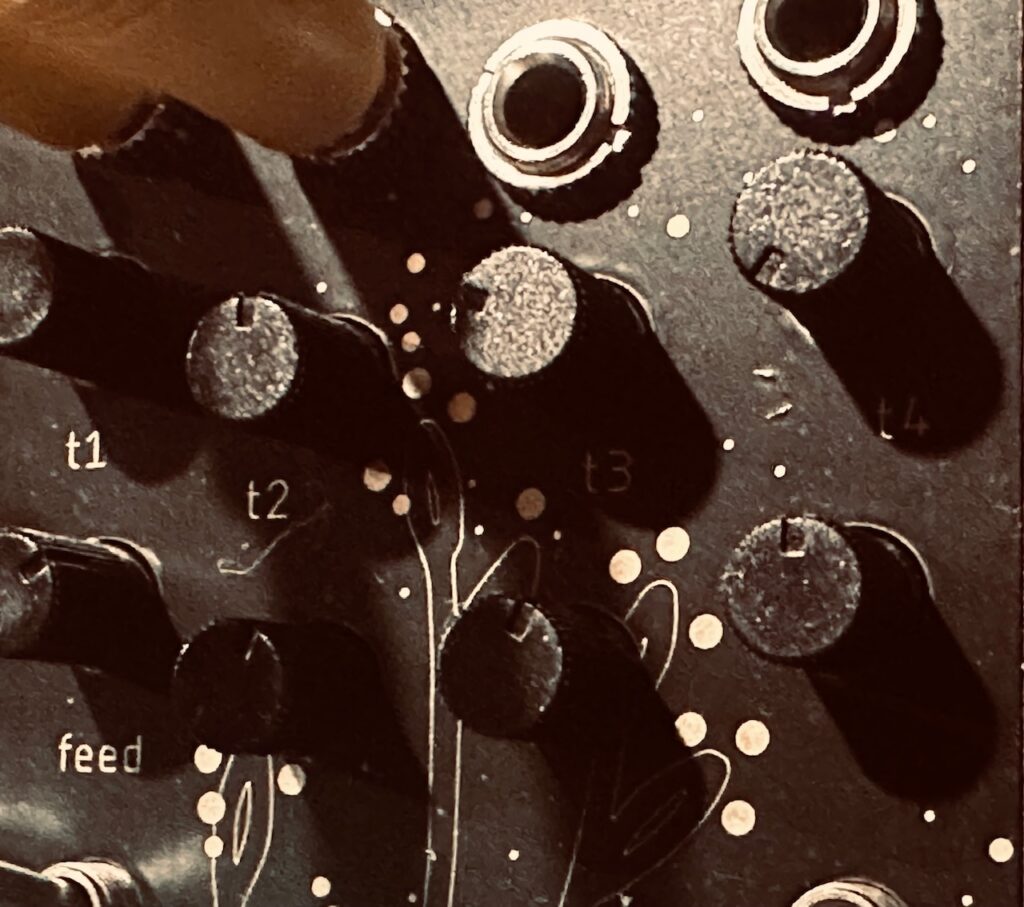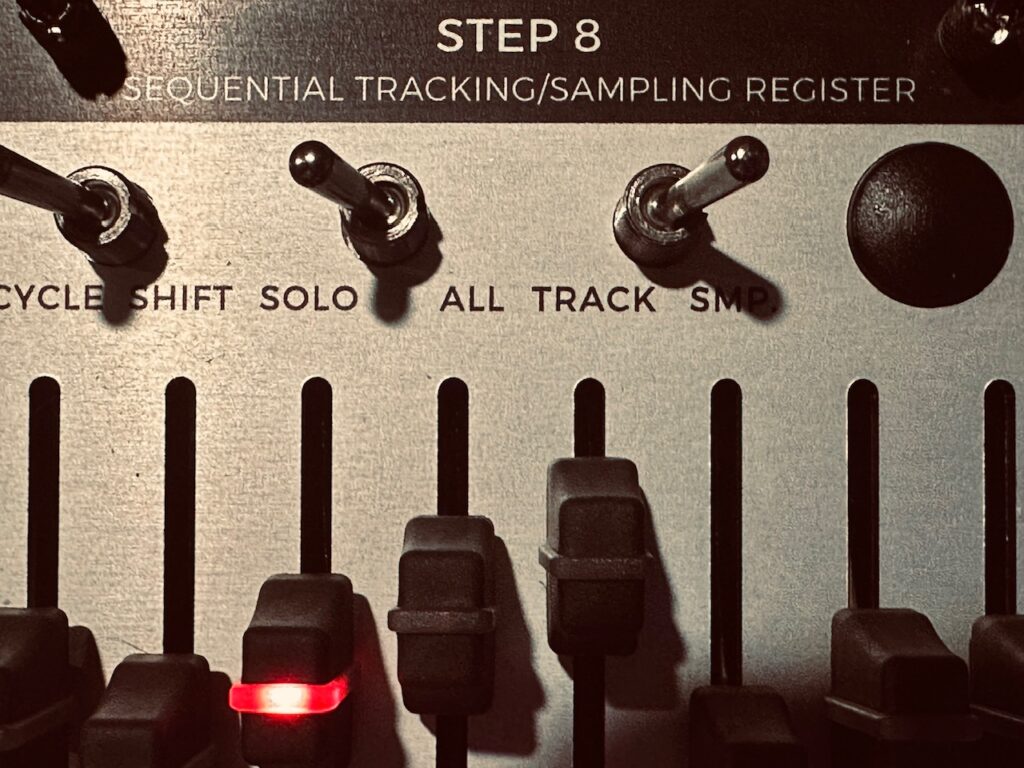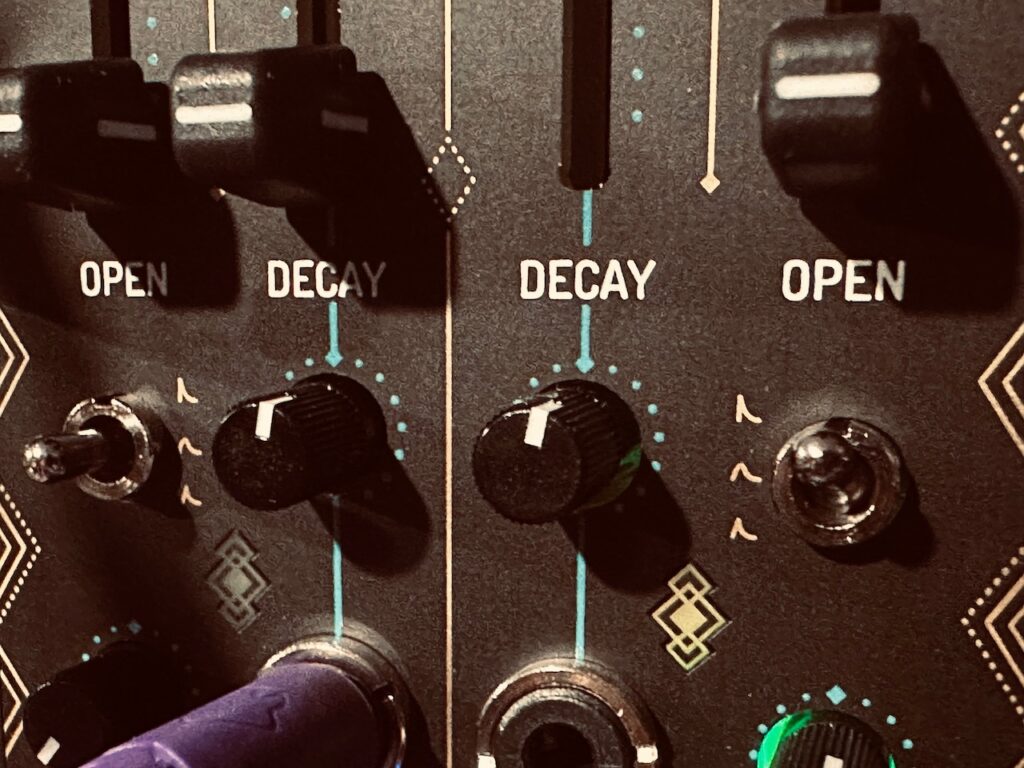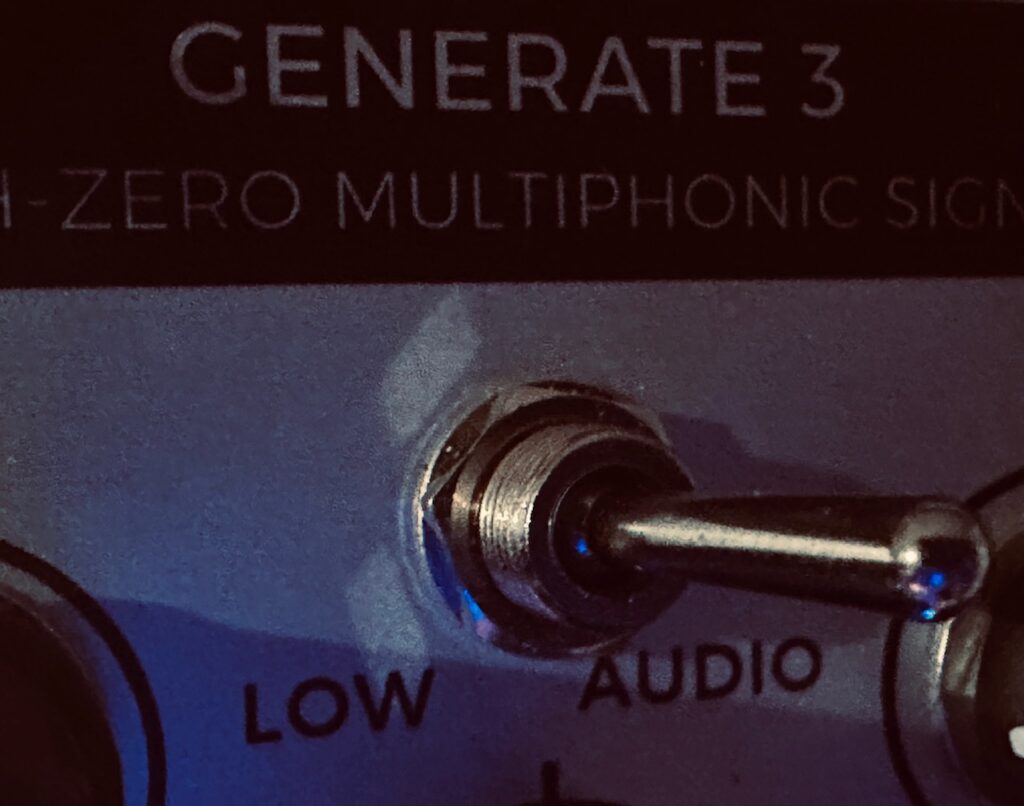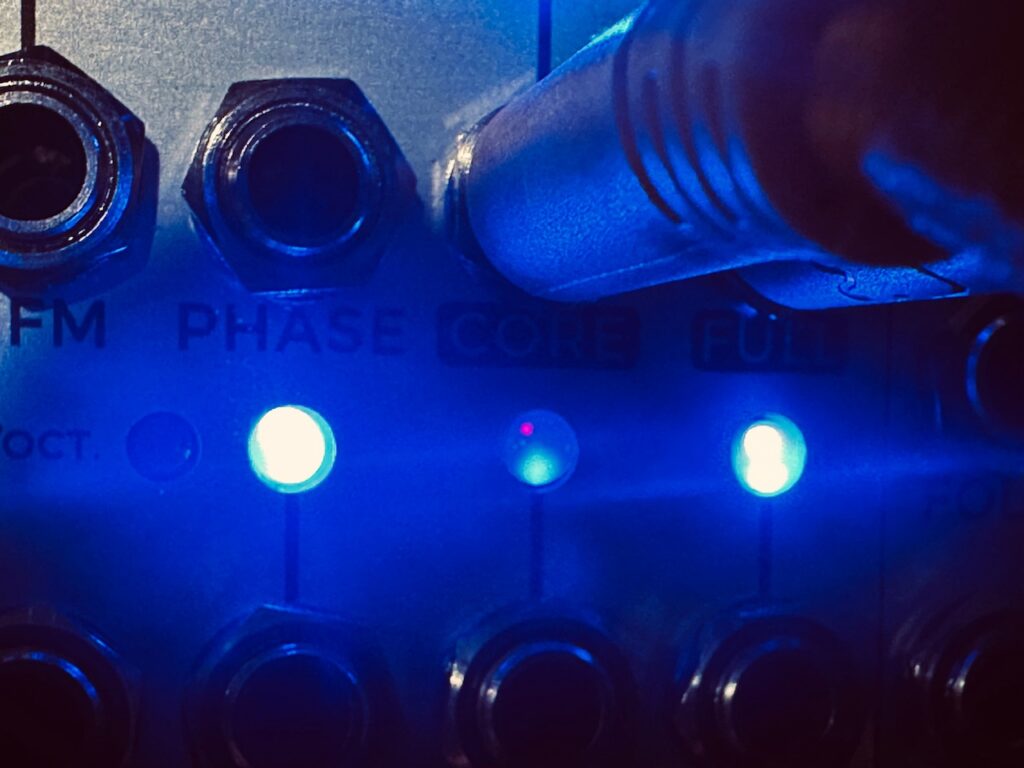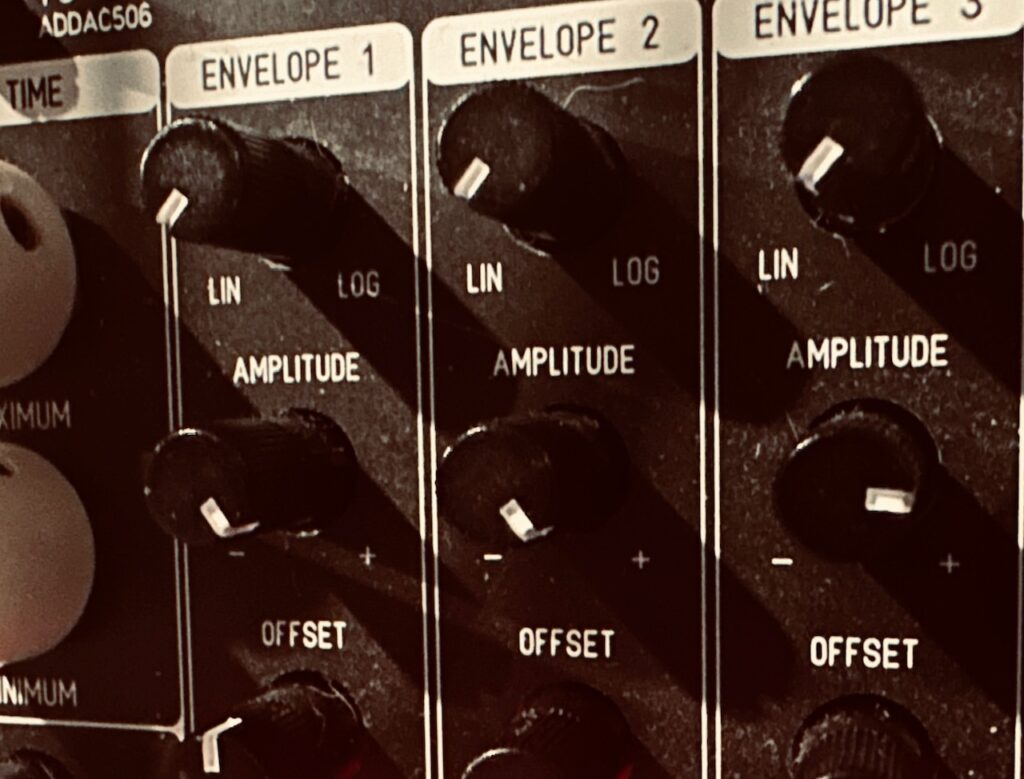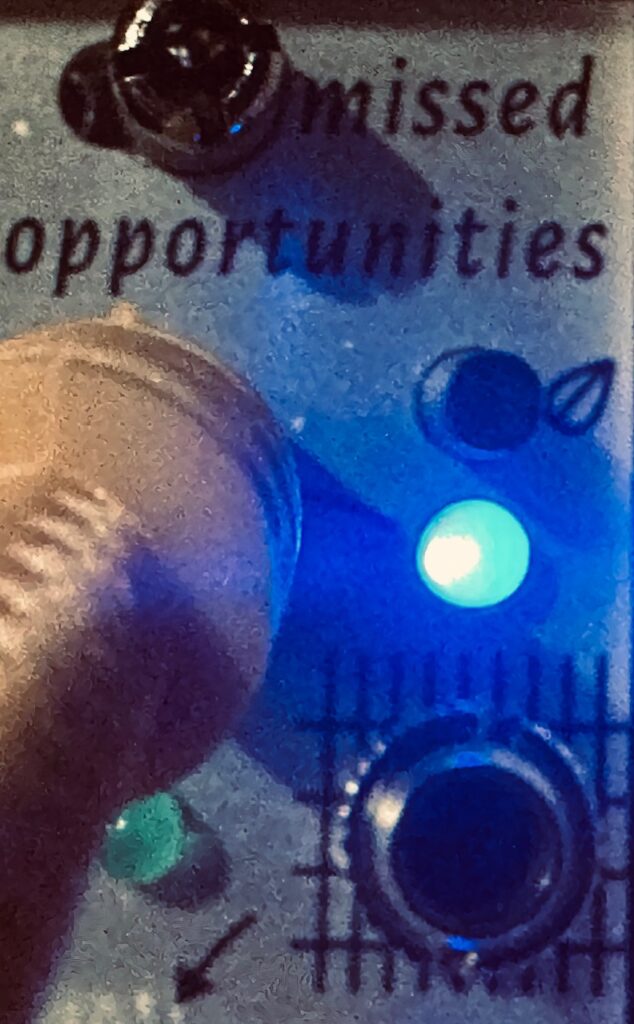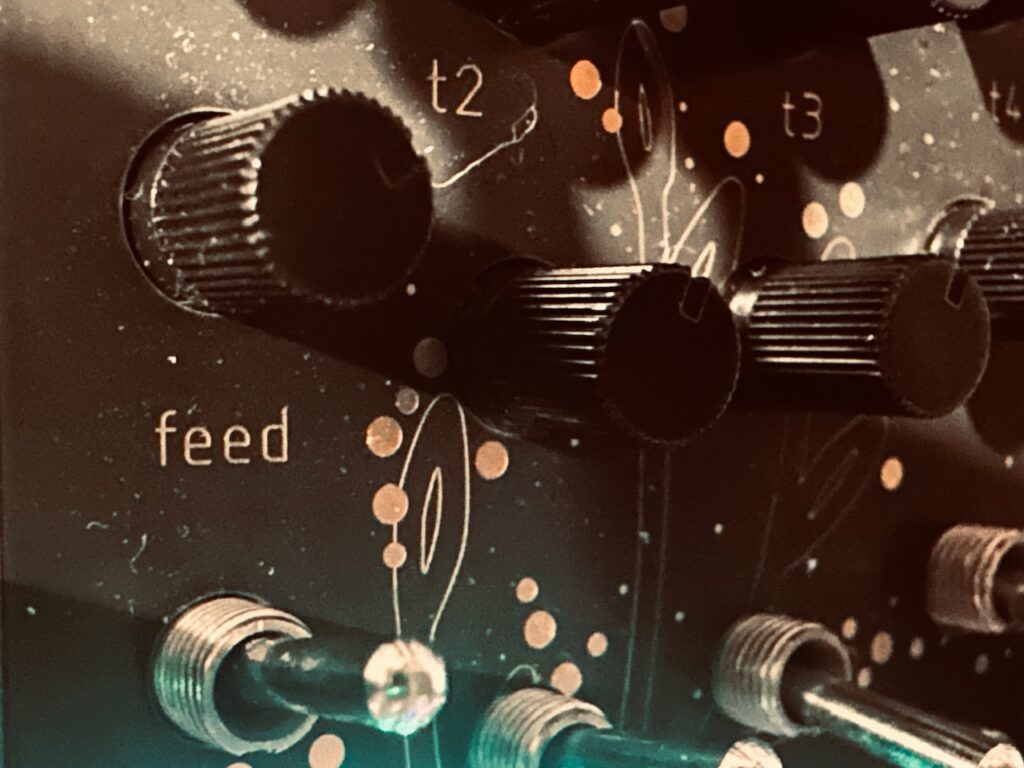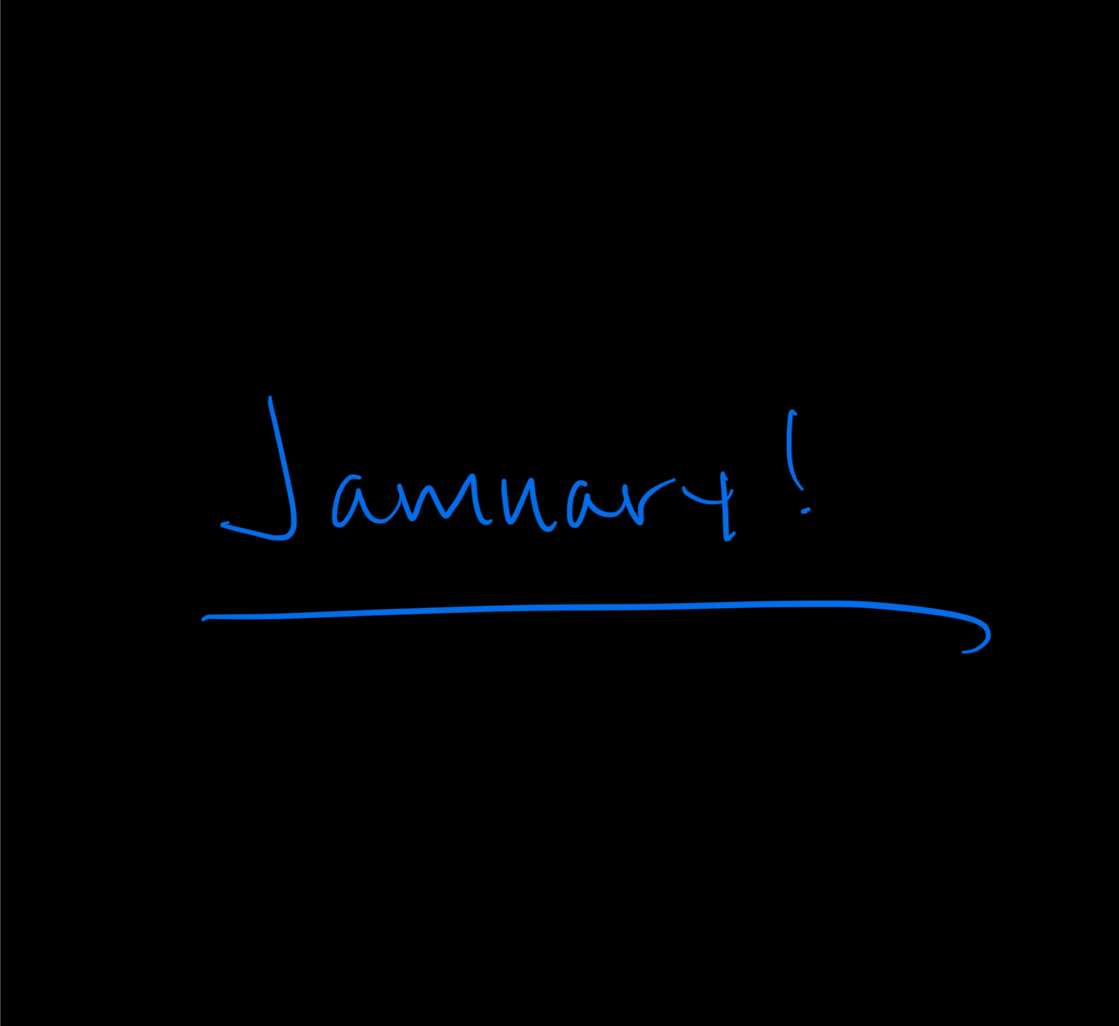Today’s patch was a long time coming. Several years ago I saw a patch from scratch video by Omri Cohen which used a Befaco Rampage as the base of everything else. It dictated volume, speed, when pitch changes would happen, timbres, and lots of others things besides. I was inspired, and immediately purchased a Rampage. Only I never tried that patch, and moved on to other great things.
Even though I no longer even have that Rampage, I do have several other Function Generators with many of the same features, and after watching the video again recently, I decided today was the day. Only I cheated a little bit. Rather than patch up various Sample and Hold modules to vary envelope length for the higher Brenso voice, I used the Addac506 Stochastic Function Generator which accomplished the same effect. I initially tried using a Falistri but the pitch was always changing a fraction too late for the cycling envelope, and I’d hear that pitch change. I worked on it for a bit, but decided to move on once I realized I wasn’t getting anywhere. To be fair, it was similar with the Addac506, but since I can negatively offset its functions directly, I was able to make it so that always happened in silence, and didn’t give a noticeable blip. I could have accomplished the same thing using a separate offset with the Falistri envelopes, but in a bit of laziness decided I didn’t want to patch it. I did use a certain kind of Sample and Hold for pitch voltage, via Quantermain for quantization into D# Phyrigian (which gives it a dark, mystical feel – like were walking through a dark elvish den), from the Nonlinearcircuits Helvetica Scenario. It differs from a standard Sample and Hold module in one unique way. Rather than using a noise source for sampling voltages, Helvetica Scenario uses a Jerk Chaos circuit running at 300Hz, which, from a practical standpoint, is similar enough.
That varying envelope and pitch control a Frap Tools Brenso, with its wave shape being modulated, along with a slight bit of modulation to the wavefolder. I’ll be the first to admit that I haven’t used Brenso very much. Not nearly as often as I should. I’m generally a bit intimidated by complex oscillators, and have mostly used them as two separate oscillators without the FM or waveshaping features, but in the spirit of loving my Frap Tools case and generally trying new things during Jamuary, I decided to give it a bit of a shot by using the waveshaper and wavefolder features. At least a little bit. I would have used some FM too, but decided to leave that for another day. I did note, however, that while patching Brenso, how beautiful the sound was. Reedy in some ways, at least before running it through the noisy PT2399 delay chip of the Bizarre Jezabel Quarté Mk2. I then ran it through to ST Modular Sum Mix & Pan to slowly pan the signal across the stereo field.
This voice was doubled by the Dradd(s) in Grain mode, time stretching the Brenso part, but at a fairly high clock rate to both shorten the buffer, and produce shorter grains.. I’ve really enjoyed using the Dradd(s) this way of late.
The ever oozing chord base underneath is the Humble Audio Quad Operator with a set chord of the one, three, five, and seven of D# Phrygian (D#, F#, A#, and B). I initially used three cycling envelopes from a pair of Falistris to control the level of those notes, but opted in the end to use a cycle similar to the one I used in Jamuary 2505 and 2511, where the End of Rise gate would trigger the next envelope, allowing the next note to fade in while the current note fades out. I should have used Sample and Hold on these envelopes to vary their length, but opted not to in the end to allow the main Brenso voice to monopolize attention. All four oscillators were mixed to mono in Intellijel Amps, and sent to the Bizarre Jezabel Pkhi Mk3 for low pass filtering before the output. The low passed audio signal was also sent to a the Venus Instruments Veno-Echo, which had its high pass filtering enabled in the feedback loop so as not to muddy the sound. I was never fully happy with how this voice turned out. The mix was too easily blown out, giving it a much darker and grittier feel than I initially intended, though after a bit of struggle, decided to lean into it a bit. I need to find a different way for gentler chord washes like this using saw waves. Some of the individual tones were buried in the mix, and at times the chord is lost.
My forgetfulness finally caught up to this Jamuary day. I forgot to take pictures of this patch before I had to turn everything off for the night so my wife could go to bed, so no pretty eye candy tonight. I may add some tomorrow. If I remember anyways.
Modules Used:
Frap Tools Brenso
Frap Tools Falistri
Addac Systems Addac506 Stochastic Function Generator
Intellijel Amps
Humble Audio Quad Operator
Nonlinearcircuits Helvetica Scenario
Nonlinearcircuits De-Escalate
Nonlinearcircuits Triple Sloths
Bizarre Jezabel Quarté Mk2
Bizarre Jezabel Pkhi Mk3
ST Modular Sum Mix & Pan
Venus Instruments Veno-Echo
Befaco/DivKid Stereo Strip
AI Synthesis 018 Stereo Matrix Mixer
Knob Farm Ferry
Outboard Gear Used:
Walrus Audio Slöer
Plugins Used:
Toneboosters TB Equalizer 4
Performed and recorded in 1 take in AUM on iPad via the Expert Sleepers ES-9.

